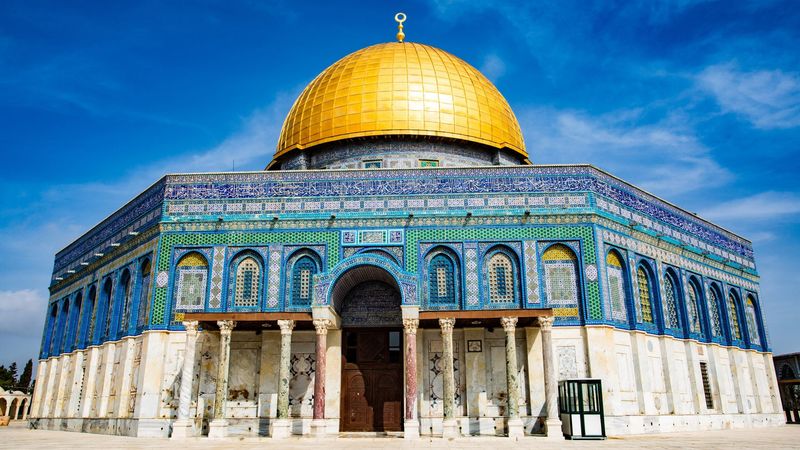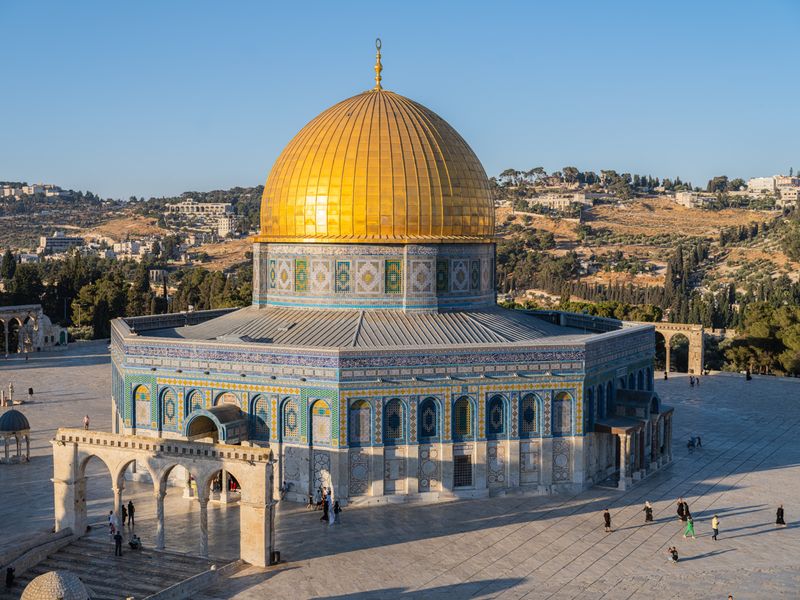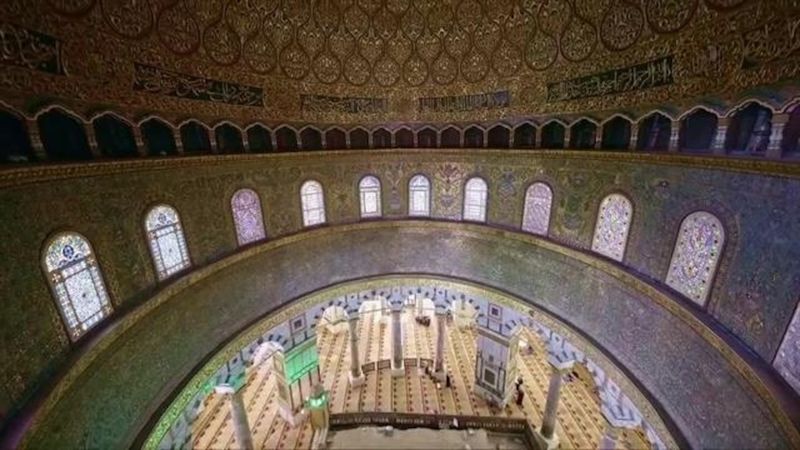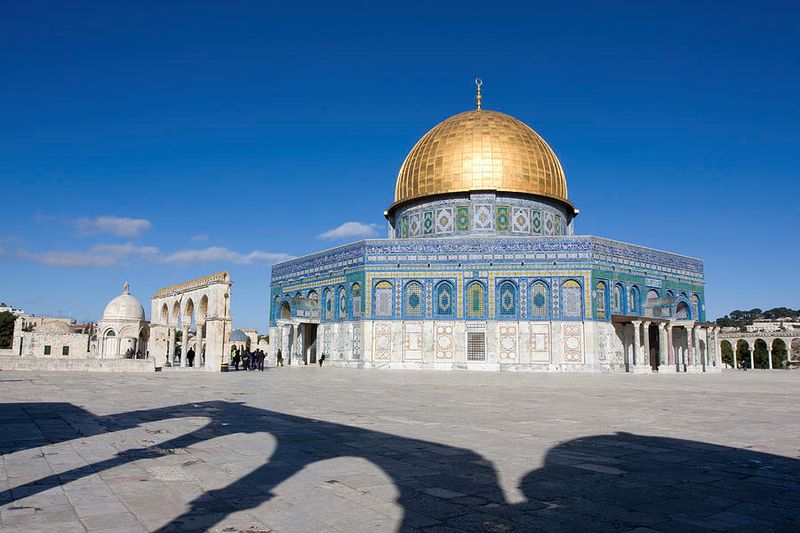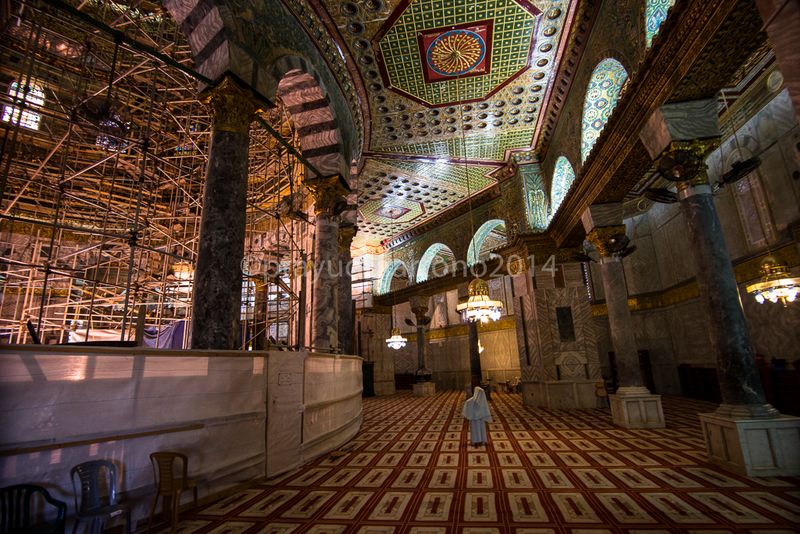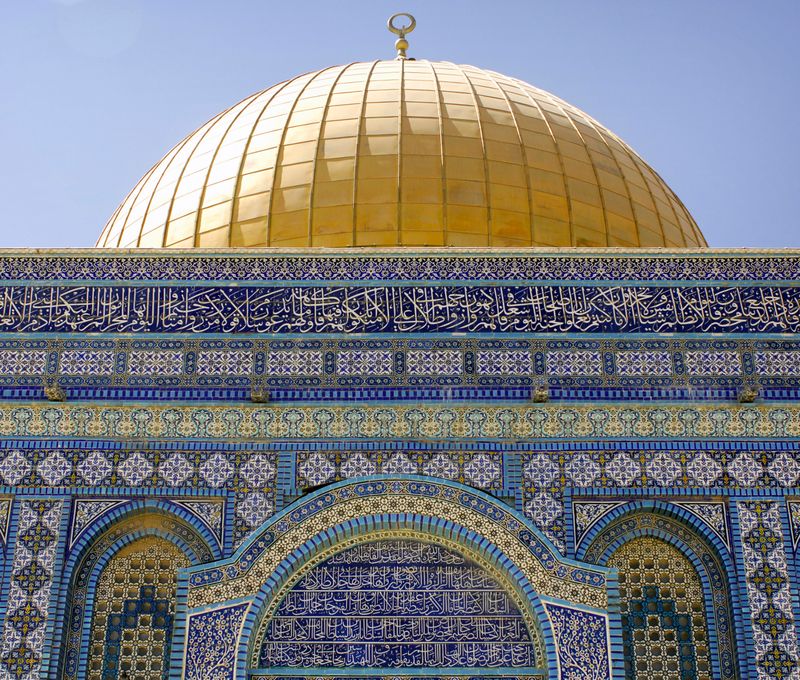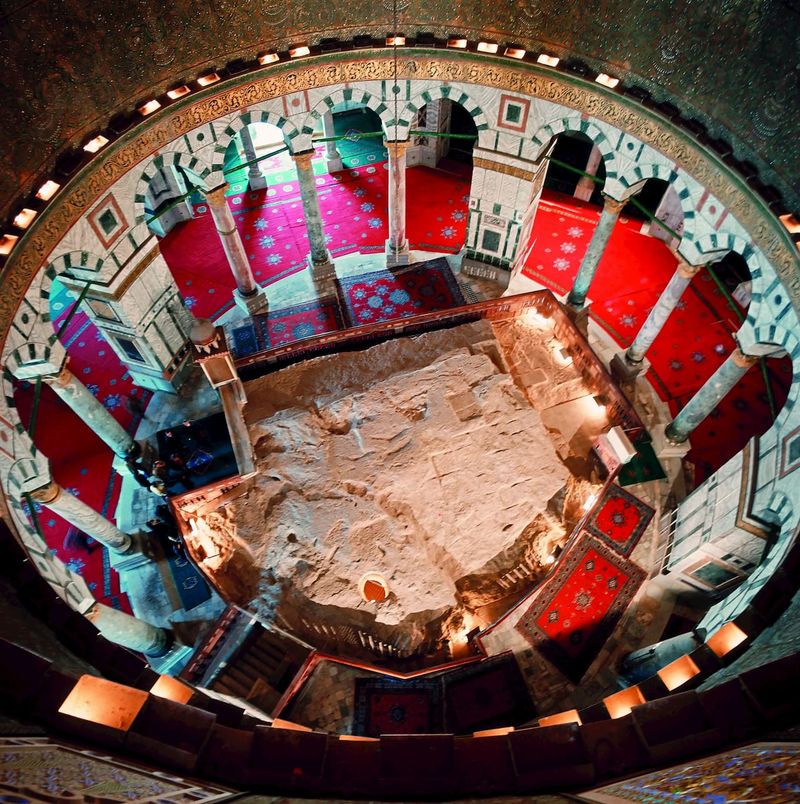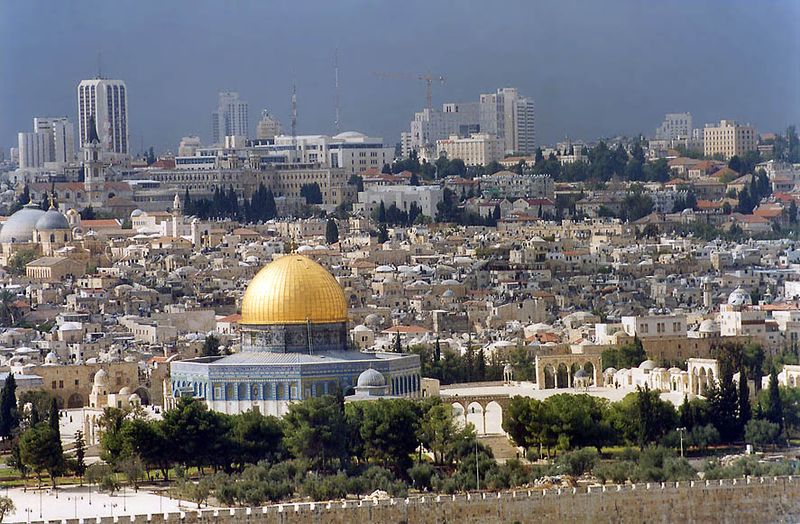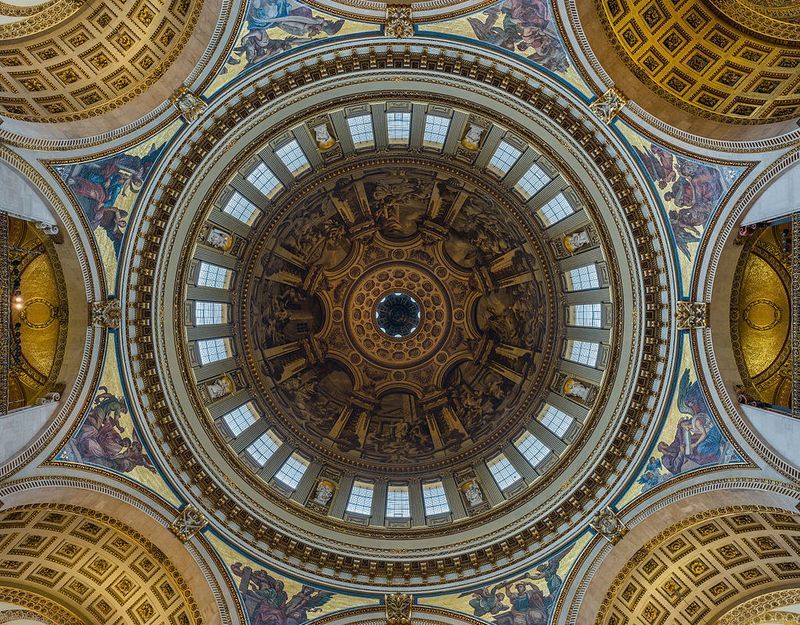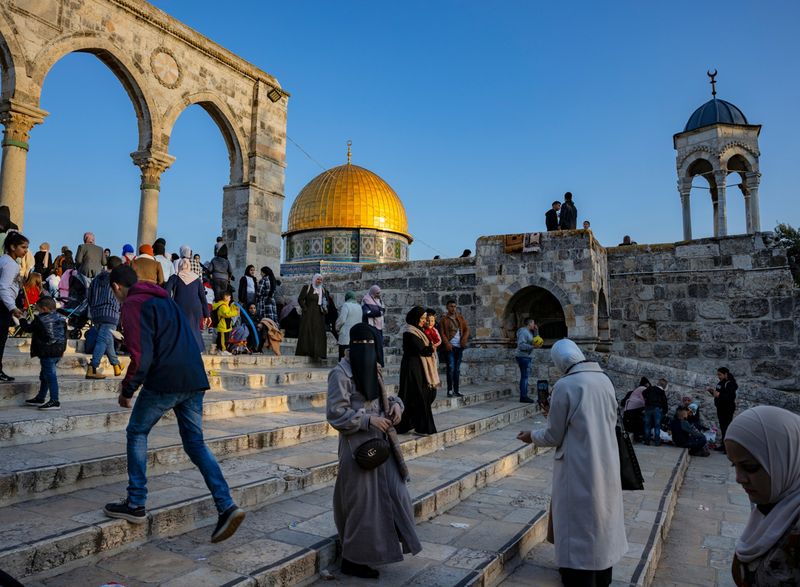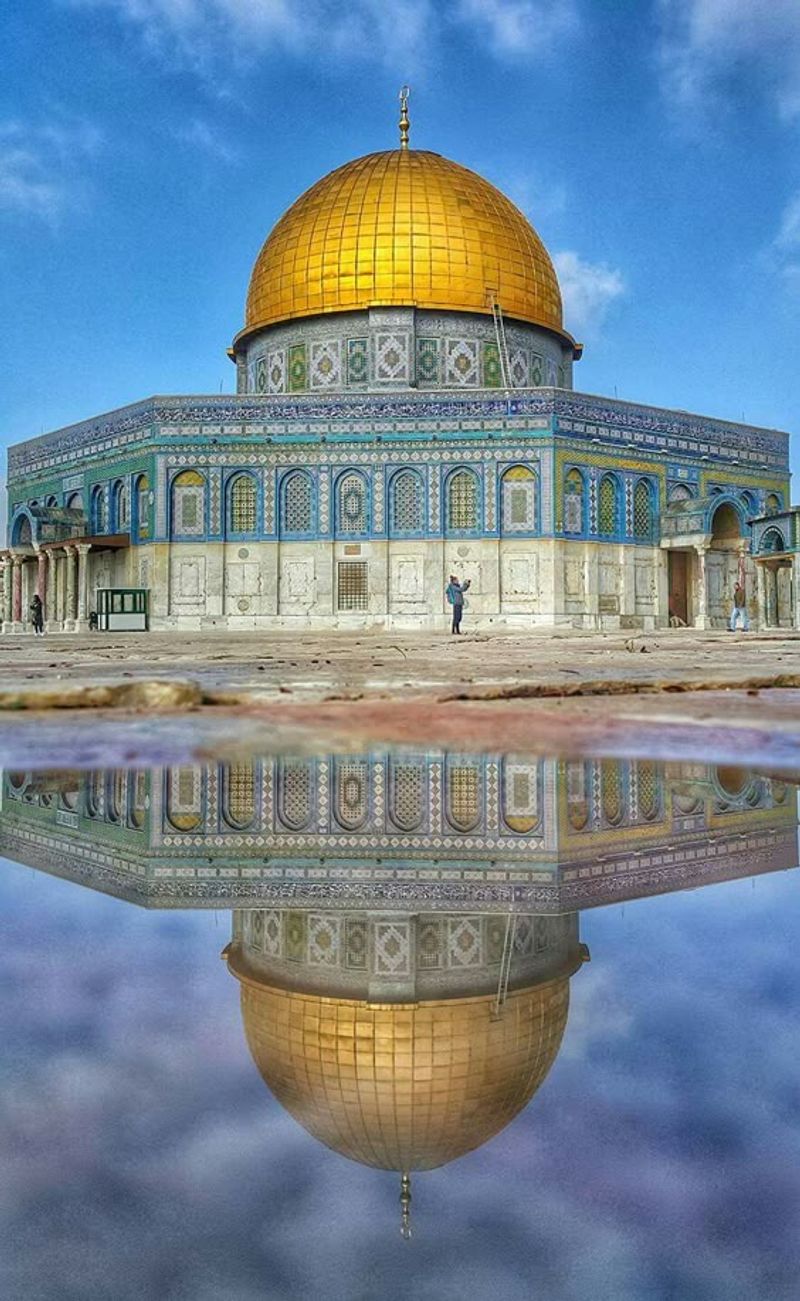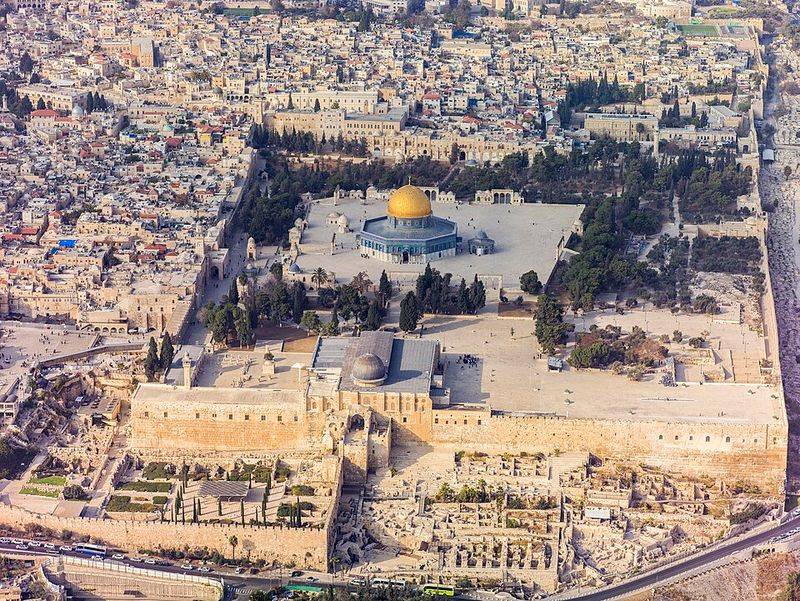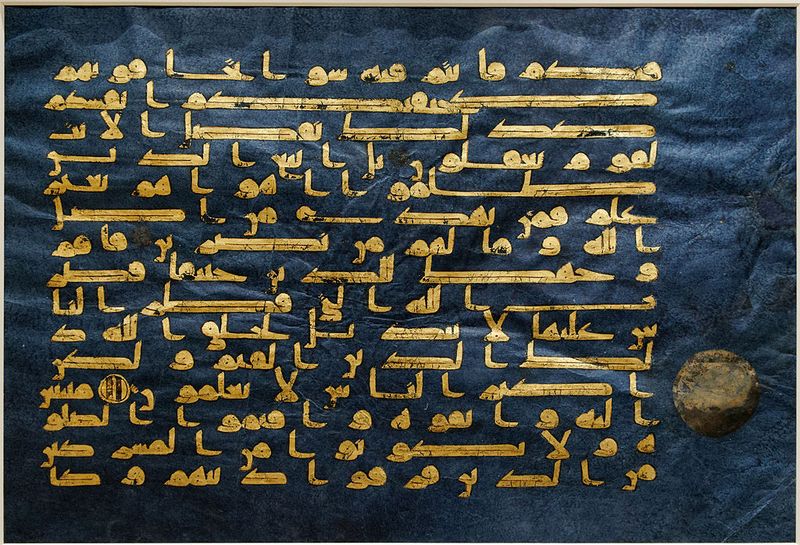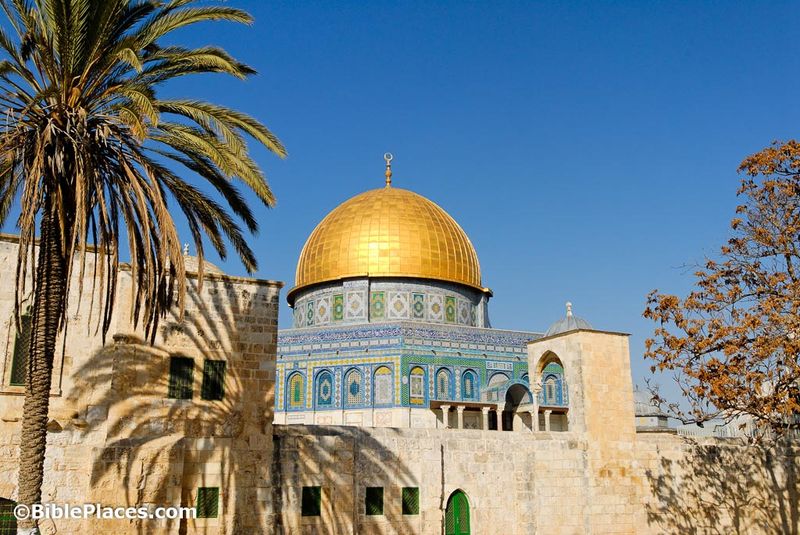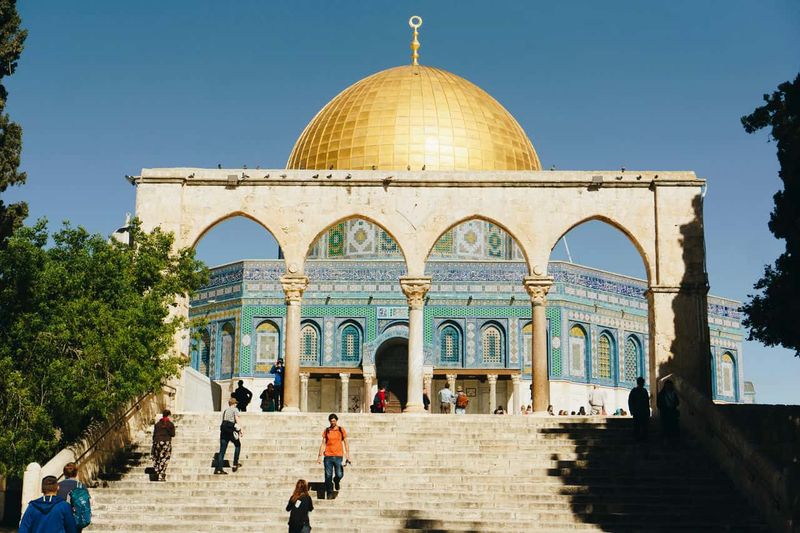Standing majestically on Jerusalem’s Temple Mount, the Dome of the Rock has captivated visitors for over 1,300 years.
This golden-domed shrine isn’t just beautiful—it’s a powerful symbol where three major religions intersect and a masterpiece of early Islamic architecture.
From its dazzling mosaics to its profound spiritual significance, this structure tells a story that spans civilizations and centuries.
1. Sacred Ground for Three Faiths
Few structures on Earth can claim to unite—and divide—three major religions simultaneously. For Muslims, the Foundation Stone marks Muhammad’s heavenly ascension. For Jews, it’s where Abraham nearly sacrificed Isaac and the site of both ancient Temples.
Christians revere Jerusalem’s biblical significance, making this golden dome a spiritual nexus unlike any other. This unique convergence of faiths transforms a beautiful building into something transcendent—a physical manifestation of humanity’s shared spiritual heritage.
2. Oldest Surviving Islamic Monument
Built just 60 years after Muhammad’s death, this architectural marvel stands as the earliest major Islamic structure still intact today. Commissioned by Caliph Abd al-Malik in 691 CE, it predates nearly every other Islamic monument worldwide.
The dome’s endurance through thirteen centuries of earthquakes, wars, and political upheavals speaks to both remarkable construction and its irreplaceable cultural value. Historians consider it the Rosetta Stone of early Islamic design—influencing countless mosques and shrines that followed.
3. Revolutionary Architectural Design
The structure’s octagonal base wasn’t chosen randomly—it represents the transition between earth (square) and heaven (circle). Byzantine craftsmen created a mathematical masterpiece that defied conventional design rules of the 7th century.
Rising 35 meters high, the dome itself seems to float above the sacred rock. The building pioneered new structural techniques that would influence sacred architecture for centuries.
No other building of its era combined geometric precision with such transcendent beauty—creating a physical bridge between the earthly and divine.
4. Dazzling Golden Dome
The dome wasn’t always golden. Originally covered in lead, then copper, it received its iconic gold-plated aluminum cover in 1993—requiring 80 kilograms of pure gold donated by King Hussein of Jordan.
Sunlight transforms this golden crown into a beacon visible throughout Jerusalem. At dawn and dusk, it creates an otherworldly glow that photographers and pilgrims travel thousands of miles to witness.
The dome’s brilliance serves a spiritual purpose too—reflecting divine light and reminding viewers of the transcendent nature of the sacred space beneath.
5. Breathtaking Byzantine Mosaics
Step inside and look up—the interior dome showcases some of the world’s finest Byzantine mosaics. Created by Christian craftsmen under Muslim direction, these dazzling patterns represent a rare artistic collaboration between faiths.
Gold, blue, and green glass tesserae form intricate vine motifs and jewel-like patterns. Unlike Christian churches of the same era, no human figures appear—honoring Islamic artistic traditions.
These 1,300-year-old masterpieces remain remarkably intact, preserving a visual symphony from an age when Jerusalem stood at the crossroads of civilizations.
6. Ancient Quranic Inscriptions
Framing the octagonal walls, the Dome houses the oldest surviving monumental Quranic inscriptions in the world. These 240-meter-long bands of elegant Kufic script date to the building’s original construction—making them invaluable to Islamic scholars and historians alike.
The carefully chosen verses focus on Jesus as a prophet—not divine—revealing how early Islam positioned itself in relation to Christianity. These inscriptions serve dual purposes: beautiful decoration and powerful theological statement.
7. The Mysterious Foundation Stone
At the heart of the shrine lies the enigmatic Foundation Stone—a massive, uneven rock surrounded by a protective wooden railing. Jewish tradition holds this as the spiritual foundation of the world and the Holy of Holies where the Ark of the Covenant once rested.
A small cave beneath (the Well of Souls) adds to its mystique. Some believe it’s where the spirits of the dead gather.
Visible marks and indentations on the stone’s surface have sparked countless legends across faiths—from Muhammad’s footprint to the handprint of the angel Gabriel.
8. Jerusalem’s Most Recognized Landmark
From nearly any vantage point in Jerusalem, the golden dome commands attention—a shimmering beacon above the ancient city’s skyline. Its silhouette appears on everything from Palestinian currency to tourist souvenirs, becoming visual shorthand for Jerusalem itself.
Artists across centuries have painted, photographed, and sketched this iconic profile. Even for those who never visit, the dome’s distinctive shape is instantly recognizable worldwide.
No other structure so perfectly encapsulates Jerusalem’s beauty, complexity, and spiritual significance in a single glance.
9. Fusion of Cultural Influences
The Dome represents a remarkable cultural synthesis—Persian arches meet Byzantine mosaics beneath an Arab-inspired dome. Built during a transitional period, it captures the moment when Islamic art was developing its distinct identity while incorporating existing traditions.
Syrian artisans worked alongside Egyptian craftsmen and Greek designers. The result? A building that transcends any single cultural tradition.
This architectural melting pot demonstrates how Islamic civilization absorbed and transformed the artistic heritage of conquered lands—creating something entirely new and magnificent.
10. Survivor of Countless Conflicts
Jerusalem has been conquered 44 times throughout history, yet the Dome stands largely unchanged. When Crusaders seized Jerusalem in 1099, they respected the structure—converting it to a church rather than destroying it.
Earthquakes in 1927 and 1937 damaged parts of the building but never toppled it. Even in modern conflicts, all sides have recognized its irreplaceable value.
This resilience makes it more than architecture—it’s a testament to humanity’s capacity to preserve beauty across divides of faith, politics, and time.
11. Perfect Mathematical Proportions
Hidden within the Dome’s design lies mathematical perfection that still amazes modern architects. The ratio between the dome’s diameter and the building’s width reflects sacred geometry principles found throughout nature.
Medieval builders achieved this precision without modern tools—using only ropes, compasses, and astronomical calculations. The octagonal drum supporting the dome creates perfect 45-degree angles that distribute weight with remarkable efficiency.
These mathematical relationships weren’t just structural—they represented cosmic harmony and divine order in physical form.
12. Center of Eschatological Prophecies
The ground beneath the Dome features prominently in end-times prophecies across faiths. Islamic tradition holds that the Day of Judgment will begin here, with a thin bridge stretching from the Mount of Olives across the Kidron Valley to this very spot.
Jewish eschatology identifies this location for the Third Temple’s construction before the messianic age. Some Christian traditions connect it to apocalyptic events described in Revelation.
This convergence of prophetic significance adds spiritual weight few other places on Earth can claim.
13. Masterpiece of Islamic Calligraphy
Beyond its architectural splendor, the Dome showcases calligraphy as high art. Sprawling inscriptions wrap around both interior and exterior walls—among the earliest and most significant examples of monumental Islamic calligraphy anywhere.
The elegant Kufic script transforms Quranic verses into visual poetry. Gold letters against deep blue backgrounds create a mesmerizing effect as sunlight plays across their surfaces.
These inscriptions aren’t mere decoration—they’re integral to the building’s purpose, literally wrapping the sacred space in divine words.
14. Astronomical Alignment
The Dome wasn’t positioned randomly—its location and orientation follow precise astronomical principles. Aligned with solar events, the building creates spectacular light effects during solstices and equinoxes.
During certain mornings, sunlight streams through eastern windows, illuminating specific inscriptions and architectural features. These alignments weren’t accidental but carefully calculated to connect the earthly structure with celestial movements.
Like many ancient sacred sites worldwide, the Dome incorporated astronomy into its design—making it not just a building but a three-dimensional calendar and celestial marker.
15. Inspiration for Global Architecture
The Dome’s influence extends far beyond Jerusalem. From Spain’s Great Mosque of Córdoba to India’s Taj Mahal, countless structures echo elements of its revolutionary design. Even some synagogues and churches have incorporated its distinctive profile and proportions.
Modern architects still study its perfect balance of weight, light, and space. Frank Lloyd Wright once remarked that its spatial harmony represented architecture’s highest achievement.
Its influence transcends religious boundaries—becoming part of our shared architectural vocabulary and inspiring buildings across continents and centuries.
